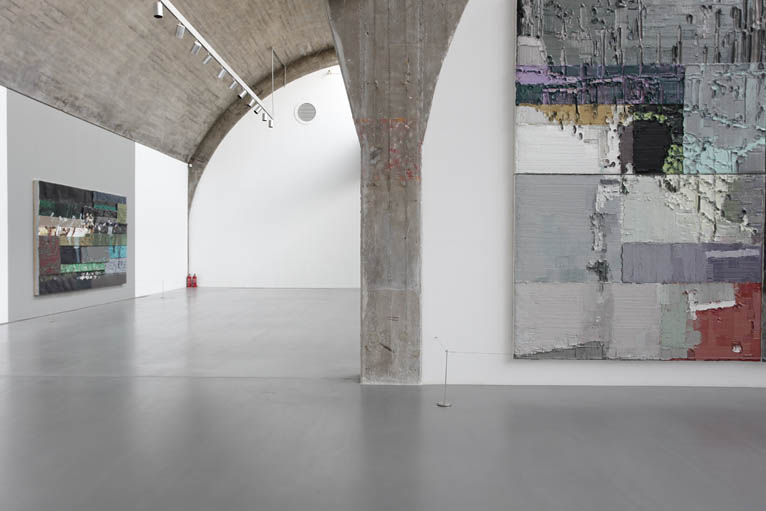LI SONGSONG: ABSTRACT
| February 1, 2010 | Post In LEAP 1

Tangibles outweigh any abstractions that might have been promised in Li Songsong’s latest solo show, “Abstract” at Pace Beijing. There is Li’s trademark style of painting, an impasto of creamy pigment layered upon canvas as thickly as gelato in trays. And then there is his signature content, a single photographic source spliced into juxtaposed fields of color and canvas in an inchoate reconstruction of the original image. The physicality of the final object is overwhelming, the texture so wrought and thick that it becomes difficult to imagine anything about the painting that is not already physically present.
But Li does not paint in a documentary mode, and none of the works in “Abstract” strive for historical or representational accuracy. Though he culls his images from informal and historical sources, Li manipulates the original into a final, painted translation that is more parts cultural imaginary than fine arts facsimile.
In the past, Li’s investment in his historical source material was clearer. Take for example his 2004 solo exhibition at China Art Archives and Warehouse, composed of paintings based upon photographs taken in China during the 1970s, such as Square (2004), a sea of mourners slumped over with grief in the year of Mao’s death. Li never endows these works with an explicit narrative thrust, but the political charge is clear, inflected with a nostalgia for histories that the artist, in his adult life, has only been able to grasp at—born in 1973, Li was never a conscious negotiator of that decade’s full weight.
In “Abstract,” Li has turned toward more vernacular subjects for his paintings. Kids (2009) is based upon a childhood portrait of his wife, the painter Nie Mu, and her kindergarten class, while Life Raft (2009) singles out a single panel from an aircraft safety card of passengers seated neatly in an emergency life raft with their life vests deployed.
Formally, the paintings in “Abstract” are consistent with Li’s oeuvre, a combination of oil and acrylics over a piecemeal of canvas or aluminum surfaces. This time around, he uses color more liberally, albeit inconsistently: it passes through the paintings like weather, here imbuing an image that was originally black and white with a palette of pastels, there absent from frozen tableaus. Many works have lost the figural anonymity that allowed viewers to project their own emotional investment onto the image—like Wish for Long Life (2003), where the blank faces of a family toasting to its health functioned as ciphers for the viewers’ own projections. Instead, figures and faces are thickly defined with fleshy swaths of paint as in Public Enemy (2008), a diptych one part cop killer Yang Jia’s widely reproduced mug shot and murder weapon, and another part police station mise-en-scène.
Pockmarked by the sharp edge of Li’s palette knife, his paintings exploit the full materiality of the medium. But as such, they bring little to bear on the quantitative specifics of their source, invoking the political without speaking to it. Instead, Li presents viewers with other ways of seeing (or possessing) the cultural imaginaries of modern China. Those paintings that take the historical as their point of departure reinvent moments whose experience Li inherited, even as it remained inaccessible. Others go a step further, imagining perspectives that are left unrecorded: one panel of the diptych Oxygen Mask (2009) recreates the demonstrative aircraft safety card image of an adult helping a child with his mask, while the other imagines what the backside of the same scene would look like. The panels wed didacticism with dimensionality, restoring perspective to the externally authored imaginaries whose contours define the narrative of our own lives. Angie Baecker

